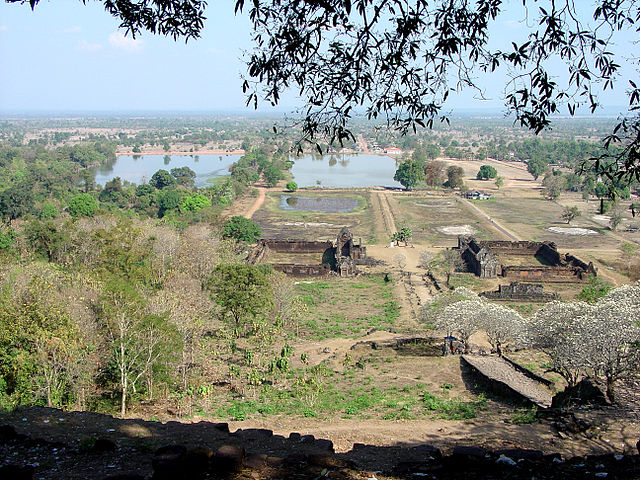
Causeway and Basin
Wat Phu, Laos
11th - 12th century

|
Causeway and BasinWat Phu, Laos
|
The axial temple of Wat Phu is spectacularly situated at the base of Lingaparvata. In this photo, looking east from the sanctuary partway up the mountain, we see the temple's causeway, which runs east-southeast and terminates in two grand barays (excavated reservoirs). The "middle baray," seen end-on in this photo, measures 200x600 meters. Its great length recedes much further into the distance than one can accurately judge here, being approximately equal to the distance from its near bank to the base of the mountain. The north baray (photo left) is wider, and lies due east of the sanctuary. The barays were probably built by Suryavarman II (1113-1150).
One asks why the axis of the temple is south of due east, and why the two barays are situated as they are. The answer lies in astronomy: the barays were designed to reflect the image of the sun, from the north baray at the equinoxes, and from the middle baray at the winter solistice.
On either side of the temple axis there are two large buildings (next page), of unknown function, each enclosing a square courtyard. Like most of the surviving buildings, these were built earlier (11th - early 12th century) than the barays.

|

|

|